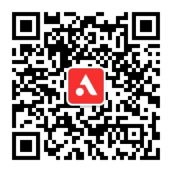
ifanr 访谈:Pip.io,野心勃勃的社交网络平台
刚上线的 Pip.io 以全新的 web app 设计理念,整合了现有的社交网络。你可以方便的查看所有添加的更新,并将讯息同时发布到不同的社交网络平台。其形式类似于多帐号的客户端,现有社交网络的用户可以无障碍的转移过来,并开始使用 pip.io 的其它服务。ifanr 近日采访了位于旧金山的 pip.io 创始人 Leo Shimizu。(English Version)

Pip.io 的两位创始人:Leo Shimizu 和 David Chen
ifanr.com:Pip.io 的想法是怎么来的?你们的目标是什么?
Leo Shimizu:我们在猜想社交网络之后的下一个热点会是什么的时候想出了 Pip.io。我们想架起更好的沟通平台,让大家通过它互相交流,而不是像 Twitter 和 Facebook 这样的生态圈一样,只是以“分享”为主。抱着这个最基本的想法,我们的目标一直是创建全新的 web 沟通标准。
ifanr:Pip.io 的开发是什么时候开始的?
Leo:Pip.io 的开发工作在 2008 年初启动,但直到 08 年 10 月我们才建立公司、开设办公室。只有两年而已啦!我觉得很酷的一点是我们比 Google Buzz 和 Wave 都早。
ifanr:Pip.io 现在有多少员工?每天的工作大概是什么样子?
Leo:我们现在有三名员工,每天工作 18 小时,睡 6 小时。:-) 关于未来半年,我们已经有了一个很扎实的路线图,所以现在每天只需要关心产品、设计、功能。
ifanr:用户在 pip.io 平均停留多长时间?
Leo:我们现在无法分享详细数据,不过整体上,用户倾向于在打开 pip.io 页面后,让页面一直开着以接受新消息,所以平均停留时间很长。这在用户体验方面带来的一个问题是,如果页面开着的时间太长,就会开始消耗系统资源,因为页面内有很多更新。我们会尽快很快解决这个问题,将不需要打开的条目自动截掉。我们相信平均停留时间此功能实现以后会更高。
ifanr:Pip.io 的设计理念是什么?它的用户界面很像 iOS,包括图标、badge、分割窗格等等。你们是不是借鉴了 iPad 的设计?
Leo:Pip.io 已经持续两年,经历过很多次改版。每次改版和用户界面升级的都是深思熟虑的结果——左侧面板为什么会在那儿,导航为什么要设计成这样……所有问题都问到底之后,才会做出改变。iPad 的应用程序确实为我们提供了一些灵感,但现在的用户界面是我们尝试了各种导航/布局模式之后的进化结果。未来两三个月里,我们将推出第三次改版——那会非常激动人心。
ifanr:Pip.io 似乎正成为所有社交网络的门户或者说接入点。Facebook 应该会有所担心,之前收购 FriendFeed 也是出于这种原因。你们有计划创建自己的社交网络吗?有传言说 pip.io 会是 Facebook 的下一个收购对象,还有一些社交网络可能会阻止 pip.io 访问它们的 API。你怎么看?
Leo:我们想让 Pip.io 成为围绕你的网络体验的“社交框架”。我们从社交媒体的爆发中了解到,任何东西只要加入一些“社交”元素,都会变得更好。所以我们不希望大家停止使用 Facebook、twitter 或新浪微博。只是想让大家通过 pip.io 来用这些服务。我们能做的就是它的体验尽量与众不同,让大家的参与度更高。
比如 Pip.io 的 Facebook 应用程序不支持照片,那是因为我们正在做一个照片程序,能够连上多个照片服务,例如 flickr,picasa,facebook photos,twipic 等等。在此之上,就可能出现同步浏览照片这样的“独特”功能。比如我可以向某人发送邀请,对方接受之后,不管我当前在看什么照片,他们也能看到。想象一下我们的本地视频聊天与这种体验融合之后的效果?
我们把 Pip.io 称作“社交操作系统”是因为我们可以将任何一个网站作为全功能的应用程序融入我们的生态圈。
ifanr:Pip.io 以后会支持 Google Reader、Google Docs、Gmail 等服务吗?
Leo:肯定会的。我们正在开发 Google Reader 程序,Gmail 程序也会很快推出。
ifanr:你们会考虑增加中国的社交网络吗?例如人人、新浪微博和开心网?我们猜测,pip.io 的架构设计考量到了 SNS 融入的便利性。能透露一下?
Leo:会,我们在整合地域性的社交网络,应该会从新浪开始。我们也希望为外界提供开发者 API,这样第三方开发者就可以自己开发应用程序了。
ifanr:频道(channels)功能很像传统的 BBS,你怎么看待这个功能的潜力?
Leo:对我们来说,频道是非常非常重要的一项功能。它还处于婴儿期,以后我们会持续开发,加入更多的个性化功能和管理功能,让它变得更强大更有意义。我不想现在就剧透,所以请保持关注:)
ifanr:你们会 pip.io 的移动客户端吗?如果是,会在哪些平台?
Leo:肯定会。顺序将会是:移动网页版(m.pip.io)、iPhone、Android。
ifanr:全球最成功的微博客服务 Twitter 目前还没找到盈利模式。Pip.io 的计划是什么?
Leo:这个问题暂时无可奉告:)
ifanr:有些人说 pip.io 有点像 Wave。Wave 对 pip.io 有没有影响?你们怎么看待 Wave的失败?
Leo:我觉得 Wave 主要是一个协作工具。比如我们就一直通过 Wave 来协调 pip.io 开发——用它列出任务表、讨论产品功能。Wave 作为沟通平台非常不直观,我想这是个问题。Pip.io 更专注于成为一个信息平台而非协作平台。
二者也许有相似的地方,但我认为它们在整体上是两款非常不同的产品。把 Google Wave 整合进 pip.io 相当方便,如果把 Wave 与特定的频道相结合应该也会很有意思。
ifanr:Pip.io 似乎有很大的野心,计划推出包括视频聊天、帖子在内的更多功能的插件和应用程序。你觉得三年内,还会有哪些突破性的互联网/web 程序?
Leo:我认为三年之内,我们都将在开放 web 平台中使用一些操作系统层的(接口)。很多公司都通过自己的方式向这一远景推进,方向越来越清楚了。Google 有 Chrome OS,苹果正将网络体验转为各种应用程序的形式。所以无论 pip.io 未来能否胜出,我相信操作系统层面的传统定义都会改变。
操作系统的传统定义是能够将硬件资源与第三方开发者联结起来的软件层。这意味着如果你是个游戏开发者,你不必担心自己的游戏能否在数千款显卡上正常渲染。我们想做的就是让 pip.io 成为一个软件层,把第三方开发者与社交资源联结起来。
ifanr:如果 pip.io 能够获得成功,你们的下一个项目是什么?
Leo:Pip.io 最终是沟通平台,我们想让它无处不在,这意味着前面有两条路:一条是地域性的增长。我们看到欧洲、巴西然后是中国市场的极速增长,我们希望 pip.io 能够成为基于 web 的沟通平台标准,也就是说我们会关注不同的地区,让它连接每个人。还有一条路是平台的增长。移动市场的推广已经开始,我们还想把它融入进电视机里。我们都知道基于互联网的广播才是未来。Pip.io 在这种情况下仍会是你的框架。
想象一下,你打开电视,最先在屏幕上看到的就是 pip.io 的登录页面。登录后你就可以进行视频聊天、使用即时通讯工具、发帖。你还可以通过 pip.io 启动游戏、facebook 程序、twitter……无所不包。如果你只是想看电视,那就打开电视程序。当地的广播公司也可能提供视频传输程序,按月收费。整套体验会与移动设备、桌面设备、电视相融合,与全世界的每一个人建立联系。因此,我们未来所有的“下一个项目”都致力于让这个更宏大的远景成为现实。
ifanr:互联网已发展多年,但 RockMelt、pip.io 这类有趣的网络服务现在才出现,是不是因为人们使用互联网的方式变了?
Leo:我想“软件”的概念会一直存在下去,只是定义会不断变化。它曾经只是桌面应用程序,现在网站也成了应用程序,替代传统的桌面程序成为主流。创建一个新的环境,让这些程序的管理与体验更进一步是大势所趋。
ifanr.com: Where did the idea of pip.io come from? What’s the goal of pip.io?
Leo Shimizu: The idea for Pip.io came when we were trying to figure out what would come after social networks. We wanted to create a better communication platform that could be used by people to communicate, and not just “share” which is the dominant verb used to describe what you do on ecosystems like Facebook and Twitter. And with that initial idea, our goal has always been to create a new standard in web based communication.
ifanr: How long have you guys worked on pip.io?
Leo: We started on this idea in early 2008 but we officially set up an office and company in October 2008. So just about two years! I think it is cool to point out that we were out before Google Buzz or Wave.
ifanr: How many employees pip.io has currently? What’s a typical day like at pip.io?
Leo: We currently have three employees. We work for about 18 hours and sleep for 6 hours. 🙂 We have a solid roadmap for the next 6 months so we are just working on the product / design / features.
ifanr: What’s the average stay time for pip.io user?
Leo: That’s currently not data we disclose but the average experience tends to be people loading Pip.io and keeping the tab open for new alerts so the average stay time is high. We are aware of a problem with the User Experience where if you keep Pip.io open for too long, it starts to take up system resources because there are so many posts in view. We will be deploying a fix for that soon that will automatically truncate posts that do not need to be open. We expect the average stay time to go even higher once that is implemented.
ifanr: What’s your design philosophy of pip.io? The UI seems to be very iOS-like, icons, badges, split panes. Did you take some design cues from iPad?
Leo: Since we have been working on the product for two years, we have had MANY redesigns. Every redesign or UI upgrade has a very logical reasoningbehind every decision. Why is the left panel here, why is the navigation like this, all of those questions are asked very thoroughly before we make any changes. The iPad applications did give us some inspiration but it was mainly a culmination of trying all different types of navigation / layout options and we eventually evolved to what we have now. We have a big Version 3 redesign coming up in 2 – 3 months which will be VERY exciting.
ifanr: It looks like pip.io is becoming the portal (or entry point) of all social networks. Facebook has a reason to be concerned. FriendFeed was acquired by Facebook for similar reasons. Do you have plan to create your own social network? Some speculations circling around being pip.io would be a target acquisition, and also certain social networks would block pip.io from accessing their APIs. What are your thoughts on that?
Leo: Well what we want to be is a “social framework” around your web experience. We know from the explosion of social media, that anything and everything is better with some elements of “social” implemented to it. So we don’t want people to stop using Facebook, or Twitter, or Sina, etc. We just want people to use those services inside Pip.io. And what we can do is make the experience unique and very engaging within Pip.io. For example, you will notice that the Facebook application does not have photos support. That is because we are working on a Photo app that will let you connect to multiple services like flickr, picasa, facebook photos, twitpic, etc. And on top of that, a “unique” functionality can be something like synchronous photo browsing. I can send someone an invite, they accept, and whatever photo I am looking at, they will be looking at as well. Imagine that experience with our native video chat. That is what we mean by a “social framework”; taking your web experience and making it more social. That is why we call ourselves a “Social OS” because we can take every single website and bring it into our ecosystem as fully functional apps.
ifanr: Will pip.io support Google Reader, Google Docs, Gmail, etc. in the future?
Leo: Absolutely. Google Reader app is currently in the works. Gmail app is coming in the near future as well.
ifanr: Will you consider adding social networks in China, such as renren.com, sina.com‘s microblog, kaixin001.com? (these are the leading SNS/twitter-like SNS sites in China, and others are fast growing). We assume pip.io‘s architecture is designed so that any SNS site can be plugged in easily. Can you share some insight on this?
Leo: Yes, we are also working on implementing on regional social networks. I believe we will start with Sina first. We are also working to get the Developer APIs out to the public so third party developers can make apps themselves.
ifanr: The channels feature is like the traditional BBS, do you see any potential in this feature?
Leo: Channels is a very very important feature for us. It is still in its infant stages and we will continue to make it more powerful and meaningful as time goes. We will implement more personalization features as well as more admin management features. I don’t want to spoil all the surprises so stay tuned. 😉
ifanr: Will you launch any mobile clients for pip.io? If so, on what platforms?
Leo: Absolutely. We will most likely deploy in this order: mobile site (m.pip.io), iPhone, Android.
ifanr: Twitter, being the leading successful microblog service, has yet to find a monetization strategy. What’s pip.io‘s plan? Will you put in ads in the future? Or a subscription-based service?
Leo: No comment for now. 😉
ifanr: Some people say pip.io is somewhat like Wave. Does Wave have any impact on pip.io? What’s your take on the failure of Wave?
Leo: I think Wave was much more of a collaboration tool. For example, we use Wave here at Pip.io all the time to work on making lists and product features. But it is a very counter intuitive proposition as a communication platform. I think that was the problem. We are very much focused on being a messaging platform than a collaboration tool. So there may be similarities but I think overall, we are very different products. Since it would be easy to have a Google Wave app inside Pip.io it would be fun to be able to embed a Wave into a channel for example.
ifanr: Sounds like you have ambitious plan for what’s coming up in pip.io, including video chats, posts, and more functional plugins/apps. What do you think, in 3 years, the type of disruptive internet/web apps will be like?
Leo: Well I think in 3 years we will be using some form of OS layer for the open web. This future is becoming more and more evident with other companies pushing their own initiatives towards this vision. Google has Chrome OS, Apple is transforming the web experience into collective “App” forms. So whether Pip.io is the winner or not, I think the traditional definition of the OS layer will change. The traditional definition of an operating system is a software layer that connects hardware resources to third party developers. That means if you are a game developer, you don’t have to worry about making sure your game renders properly on the thousands of different graphic cards. What we want to do is become a software layer that connects third party developers with social resources.
ifanr: If pip.io becomes a success (we don’t see any reason why it won’t :), what will be your next project? why?
Leo: Ultimately as a communication platform, we want to become ubiquitous and that means on two fronts. The first front is regional growth. Early on we have seen spikes of growth in Europe, Brazil, and now China. We want Pip.io to be the new standard in web based communication and so that means we will start to go after different parts of the world to connect everyone. The second front is platform growth. We are beginning our pushes into the mobile market with our mobile apps but we would also like to start implementation into television sets as well. We all know that the future is within internet based broadcasting. Pip.io can still be your framework. Imagine you turn on your TV, first thing that shows up is a Pip.io login screen. You login and you can now videochat, instant message, post, etc. You can launch games, facebook app, twitter, anything. Maybe if you really want to watch tv, you launch the TV app. Your local broadcasting company could have an app that delivers video and you get charged a monthly fee. And this whole experience is connected both on your mobile, desktop, TV, and with the entire human population. So all of our “next projects” will be to make that bigger vision come true.
ifanr: Internet has been out there for many years, why interesting/disruptive services like RockMelt and pip.io just emerged. Is that because the way people use Internet has changed?
Leo: I think the concept of “software” will always exist, it is just the definition that is changing. It used to be desktop applications and now websites are turning into applications and taking over the traditional desktop application form. It is only natural that there be an attempt to create an environment where the organization and experience of those applications are better in that said environment.
















